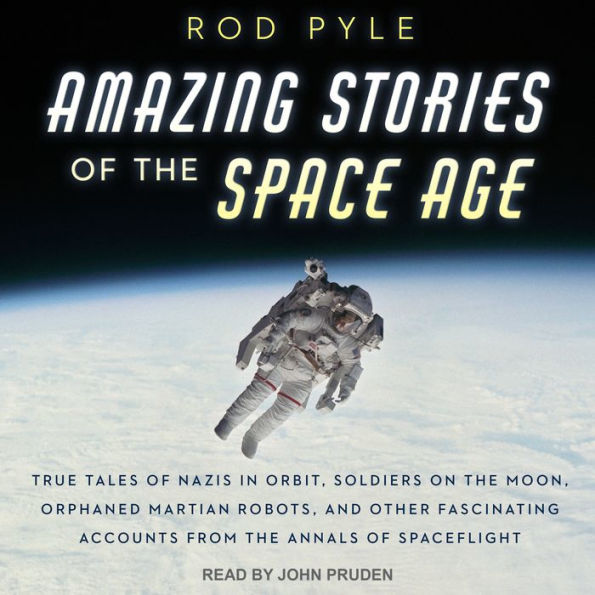""This book is essential reading for anybody with an interest in the history of spaceflight. It is a mine of information, much of it only recently declassified, on a wide range of projects. Some of the more expensive or more technologically challenging of these never made it beyond the imagination of their advocates, but their stories are no less fascinating. One of the most daring projects (chapter 3) was Wernher von Braun’s 1952 blueprint for a fleet of spacecraft to visit Mars. Although visionary at the time, it is now clear that we had neither the detailed knowledge of Mars nor the financial resources needed to turn his ideas into reality. My personal favorite was chapter 11, which gave the inside story of the historic lunar landing on July 20, 1969, and of all the things that nearly went wrong—but fortunately didn’t. All in all, a thoroughly good read.” —David K. Love, fellow of the Royal Astronomical Society and author of Kepler and the Universe “Whether you are a die-hard space fanatic or a casual reader, you’ll find this book is full of fascinating space stories you never knew existed. Rod Pyle is our space supersleuth!” —Andrew Chaikin, author of A Man on the Moon “I’m a huge fan of amazing stories, and these stories are so compelling I could not put the book down until I finished reading every one. And what’s most mind-boggling is that all these stories are true!” —Peter Z. Orton, story editor, Steven Spielberg’s Amazing Stories NBC series “Drawing upon little-known Cold War mission plans, and underreported records of actual mission emergencies, historian Rod Pyle has managed to convey the essence of the intensity and drama of those space-age years from well before Sputnik to the shuttle program. Delivering densely packed facts in an entertaining and often amusing style is what Pyle does best. Long after you’ve finished the book, you’ll remember how much fun you had reading it.” —Susan Holden Martin, the Mars Society, Inc. “So often our ongoing march into the future trumps remembering and savoring the past. Rod Pyle has made deep dives into space history, amassing well-crafted, storytelling chapters about people, projects, and dustbin endeavors, some recently declassified, that are germane to today’s space initiatives. Be it detailing US Air Force attempts to salute the militarization of Earth orbit and the moon, novel atomic-powered starships, wheeled space stations, to faulty decision making that led to the deaths of human space travelers and robots, Pyle’s ability to capture forget-me-not facts is truly amazing. This is a must-read for today’s space fan, while looking at the rearview mirror of times past.” —Leonard David, Space.com’s Space Insider columnist “A compelling collection of quixotic concepts and harrowing exploits that unfolded during humankind’s first staggering steps into the space age. Somehow, we got there, but not without more than a few misguided notions, narrow escapes, and tragedies. Rod Pyle’s account not only serves as a sobering reminder that politics, paranoia, and public relations have no place in any scientific endeavor, but it also demonstrates how far dreams, grounded in reality, can take us.” —Jeff Kanipe, author of The Cosmic Connection: How Astronomical Events Impact Life on Earth “Accomplished space author Rod Pyle digs through the yellowed archives of space history to bring us the alternate reality of space projects that might have been—a proposed Nazi space bomber, a planned trip to Mars and Venus on the ‘Nuclear Crocco’ spaceship, the sausage gun for battles on the moon, and more. He also peers between the headlines for true stories such as Neil Armstrong’s brush with death on Gemini 8, the signal from Apollo 11’s Eagle lander indicating that it might explode, and the ghastly death of a Soviet cosmonaut who suspected it was coming. This book will equip you for years’ worth of conversations over your favorite beverage.” —Steve Fentress, director, Strasenburgh Planetarium, Rochester Museum & Science Center “I highly recommend this book to anyone with an interest in space exploration. Pyle’s account of the evolution of the modern space program reminded me of events I’d forgotten, filled in details of events I thought I knew about, and revealed fascinating projects I’d never heard of. His ability to keep mind-boggling facts and fanciful yet true proposals in perspective makes this an engaging book that is gripping, yet easy to read. A wonderful addition to my reference library!” —Melanie Melton Knocke, director of CPS Planetarium, ambassador of the NASA Airborne Astronomy, and author “When the space travel of science fiction became a reality, many outlandish, risky, and sometimes foolhardy ideas seized the imaginations of individuals and world superpowers. Most of the wilder ideas never progressed further than paper studies. Some of the most impossible-sounding dreams, however, happened. Rod Pyle skillfully guides us through both major moments and forgotten corners of spaceflight triumphs and tragedies with a sense of entertaining drama, and reminds us that the ‘impossible’ can be anything but.” —Francis French, author of In the Shadow of the Moon
5
1

Amazing Stories of the Space Age: True Tales of Nazis in Orbit, Soldiers on the Moon, Orphaned Martian Robots, and Other Fascinating Accounts from the Annals of Spaceflight

Amazing Stories of the Space Age: True Tales of Nazis in Orbit, Soldiers on the Moon, Orphaned Martian Robots, and Other Fascinating Accounts from the Annals of Spaceflight
FREE
with a B&N Audiobooks Subscription
Or Pay
$17.99
17.99
In Stock

Editorial Reviews
Product Details
| BN ID: | 2940171071080 |
|---|---|
| Publisher: | Tantor Audio |
| Publication date: | 01/30/2018 |
| Edition description: | Unabridged |
Videos

From the B&N Reads Blog
